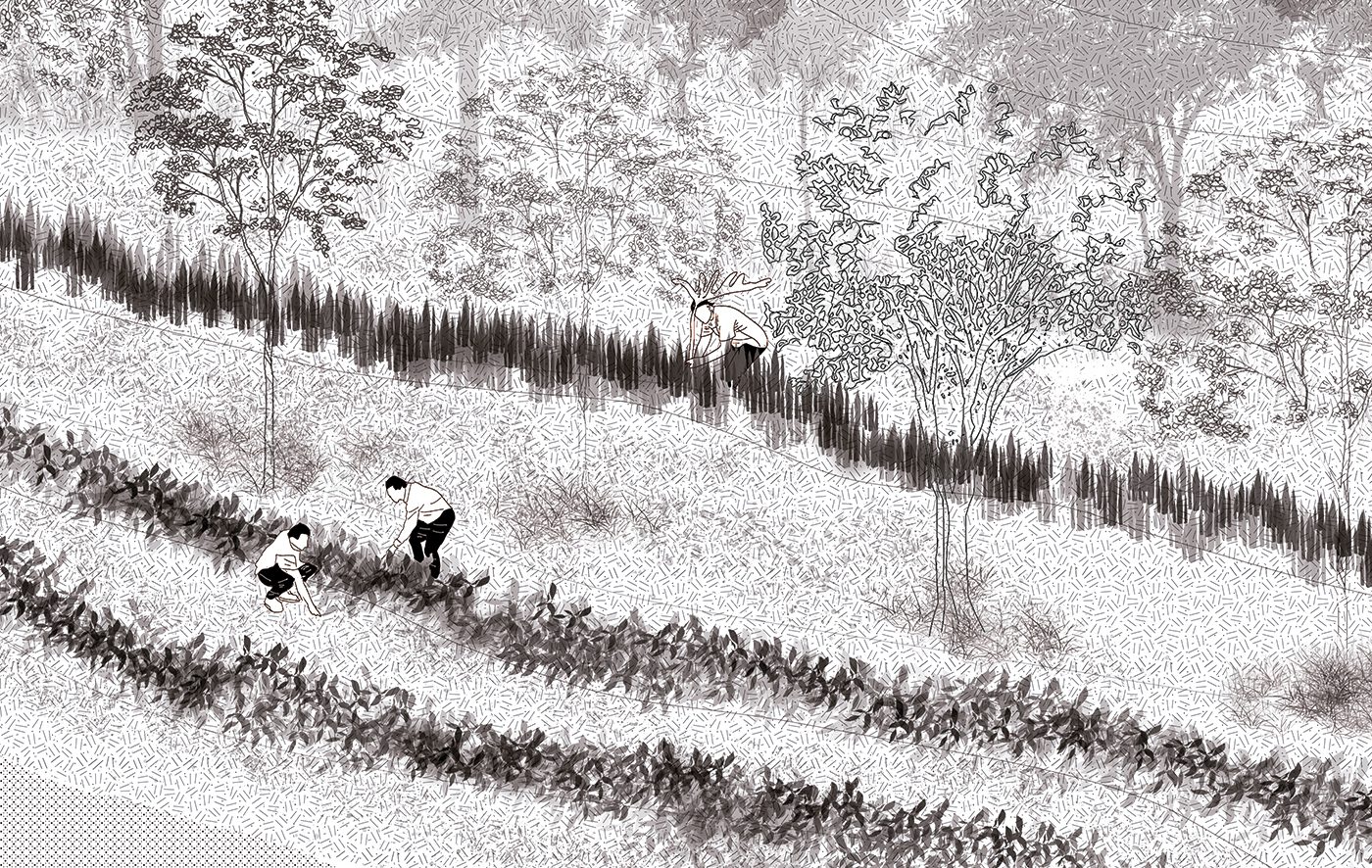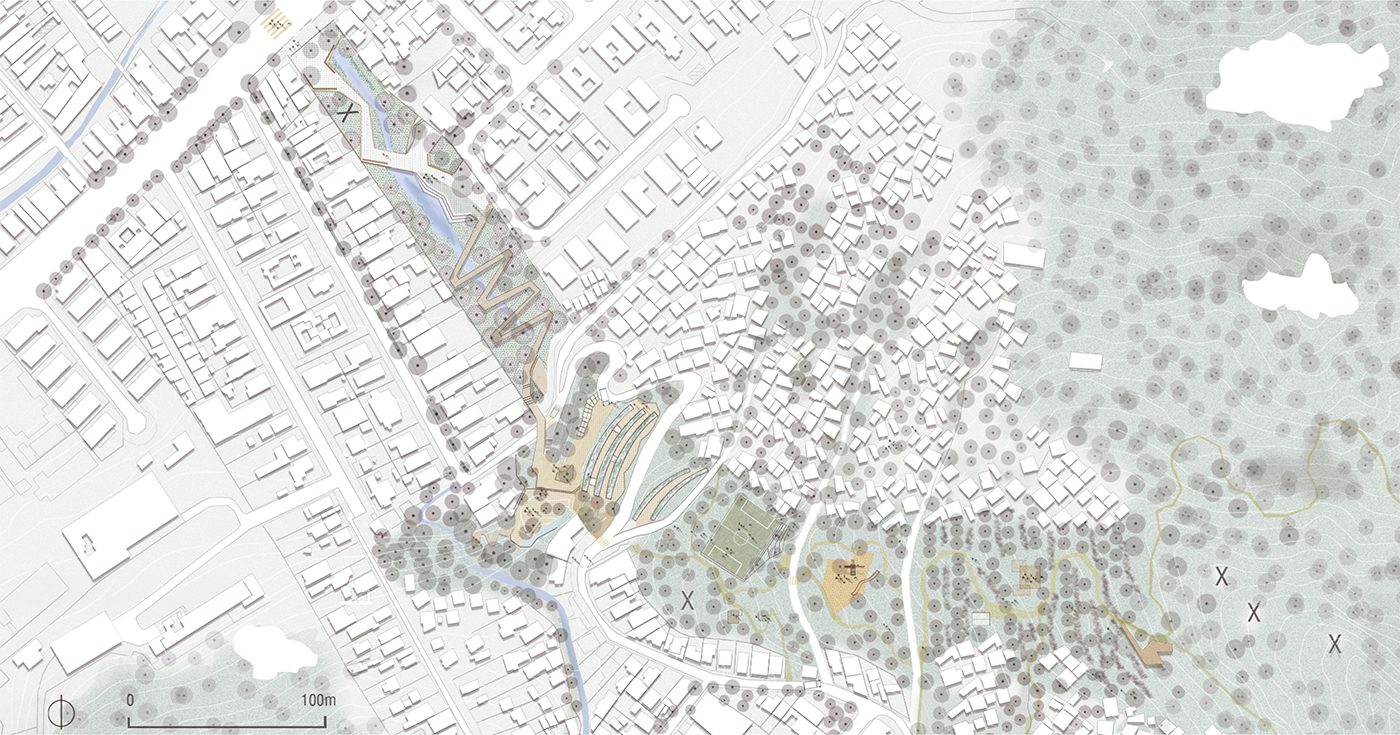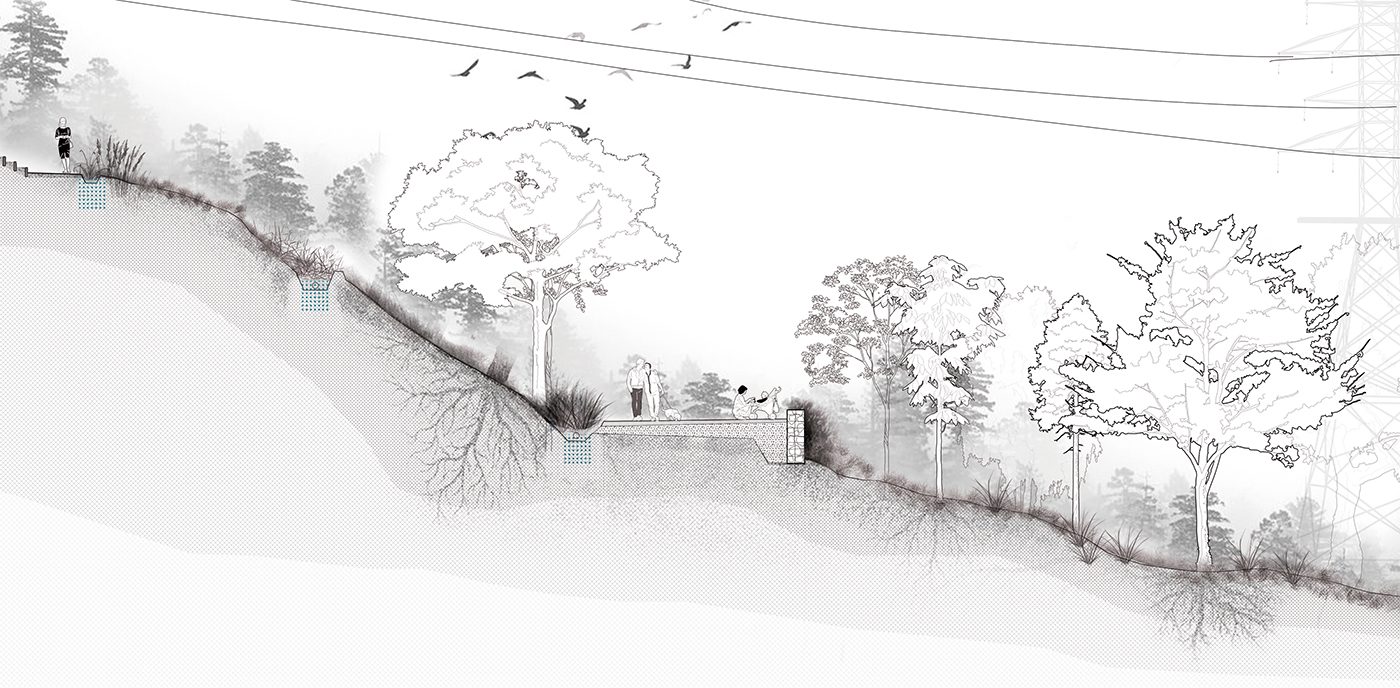Project development: Brazil
The project proposes a green infrastructure and Nature-Based Solutions (NbS) strategy for Morro da Formiga, in Rio de Janeiro, a territory characterized by informal settlement on steep slopes, insufficient infrastructure, and high vulnerability to landslides. The proposal is based on a careful analysis of the site and the recognition of environmental knowledge and practices developed by the community itself, understood as socio-environmental technologies capable of promoting resilience even outside of formal planning. The goal is to improve public and residual spaces, integrating risk mitigation actions, environmental valorization, and strengthening existing sociocultural dynamics.
The intervention area comprises a 34,000 m² section under power lines, which forms a connecting axis between the urban fabric, the hillside, and the Tijuca Forest. The design organizes continuous strips of open space along the slopes, creating ecological and social buffers. Planned interventions include the redevelopment of the Cascata River, widening its riverbed and installing filter gardens; expanding the Hortas Cariocas community program, including a seedling nursery and support areas; and implementing agroforestry systems, composting, and green drainage solutions. These actions are coordinated to connect with existing initiatives, incorporating the knowledge accumulated by residents in environmental management and expanding their reach.
The project is structured around three central guidelines: articulation, connecting fragmented spaces and bringing urban occupation closer to open areas; enhancing, expanding, and strengthening socio-environmental projects; and preserving, protecting native vegetation, water bodies, and cultural knowledge. The strategy also envisages the replication of typologies in areas of greater geotechnical risk, including the implementation of evapotranspiration basins for decentralized sewage treatment and the restoration of slopes with adapted vegetation. By reinforcing the role of the Cascata River as a structuring element, a system is created that integrates ecological infrastructure, living spaces, and community facilities, establishing a gradual transition between the forest and the urban fabric.
Beyond a set of physical interventions, the proposal constitutes a collaborative process that recognizes the community as a protagonist in the transformation of the territory. The incorporation of local knowledge, combined with high-performance environmental solutions, allows for the construction of a multifunctional and adaptive landscape, capable of responding to climate extremes and historical inequalities, promoting safety, belonging, and quality of life.
About the author:
Larissa Scheuer is an architect and urban planner with a degree from FAU-UFRJ and works as a landscape architect at Embyá – Ecological Landscaping. With experience in landscape architecture and urban planning, her work has been recognized with several national awards, including the Arquitetas e Arquitetos do Amanhã Award, third place in the Grandjean de Montigny Award, and selection as a finalist for the Tomie Ohtake AkzoNobel Prize.




